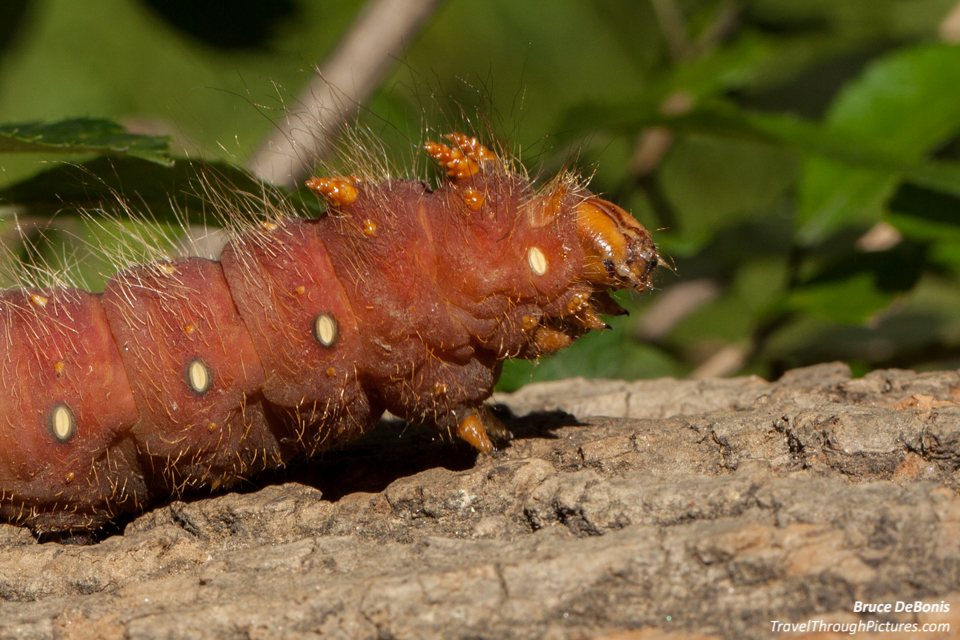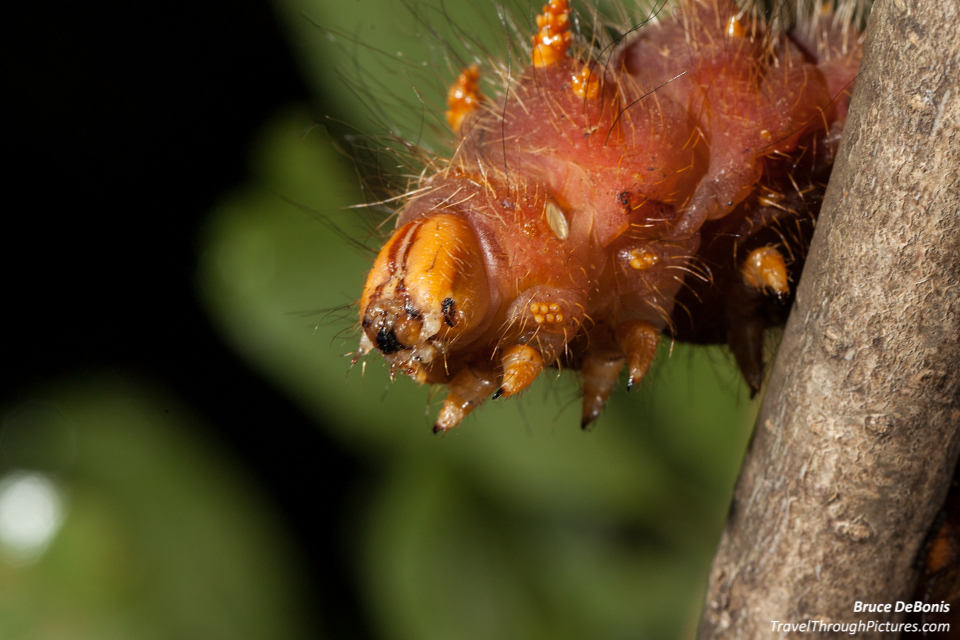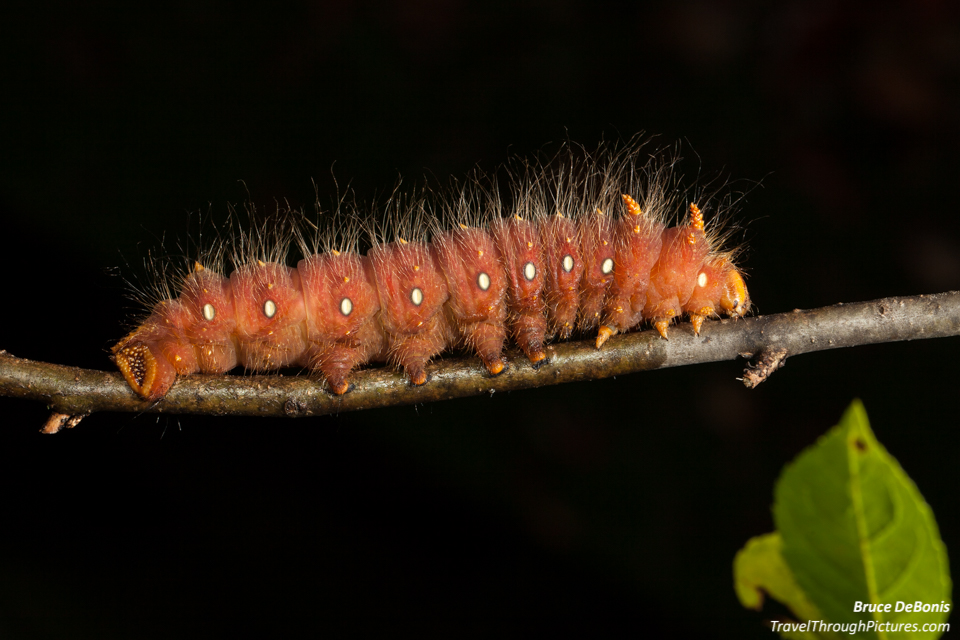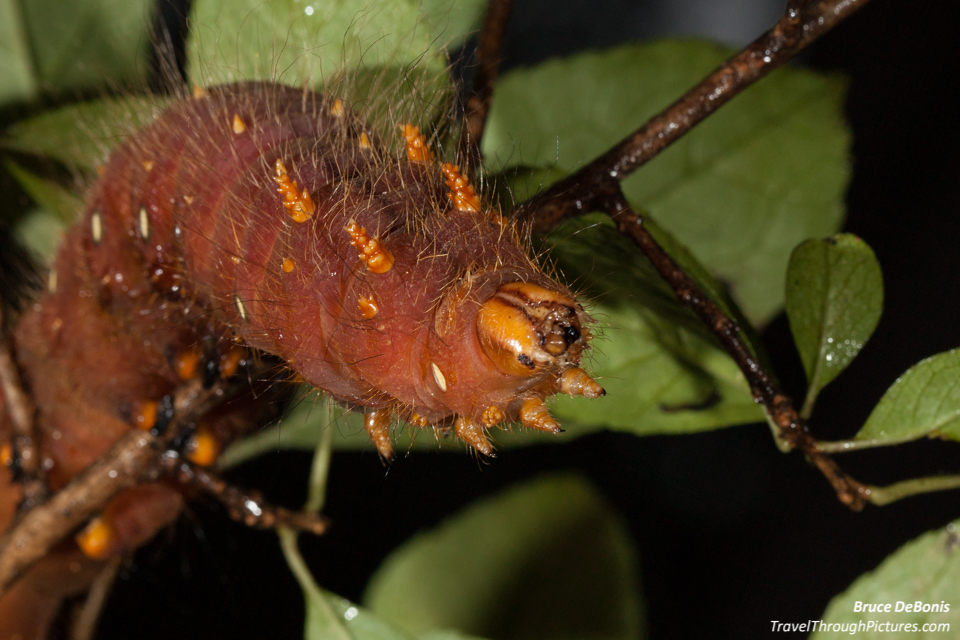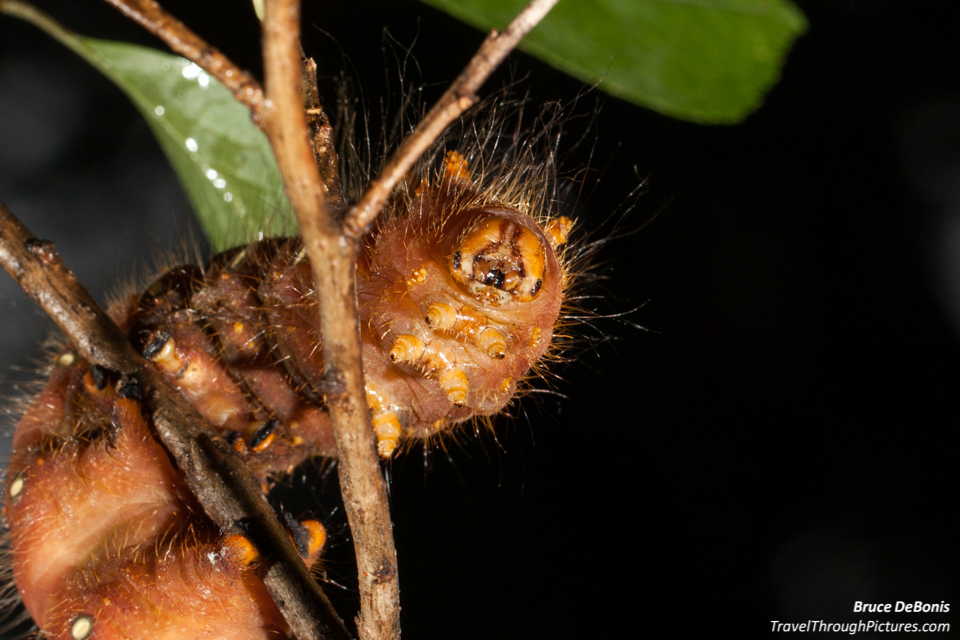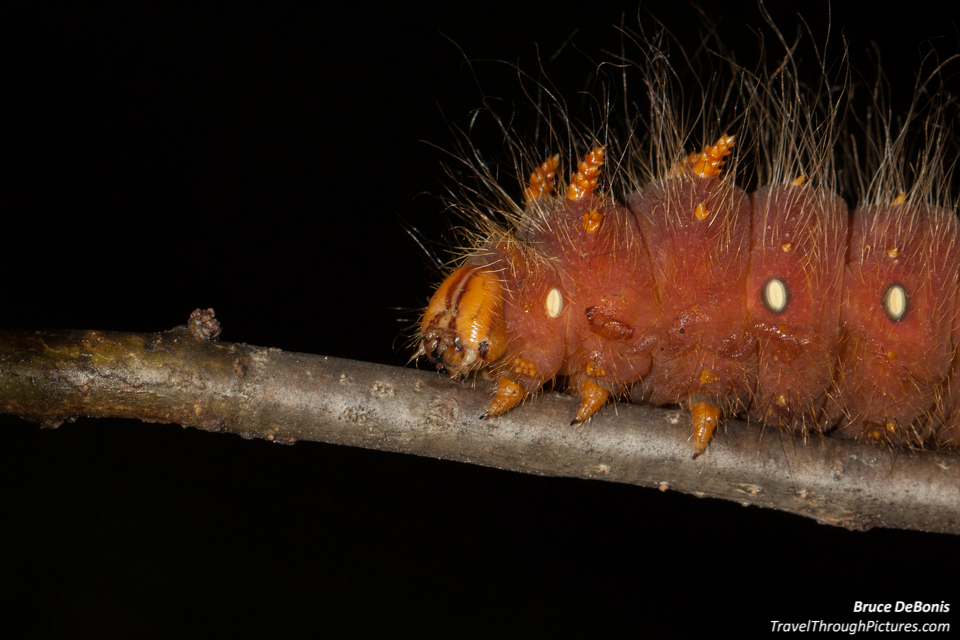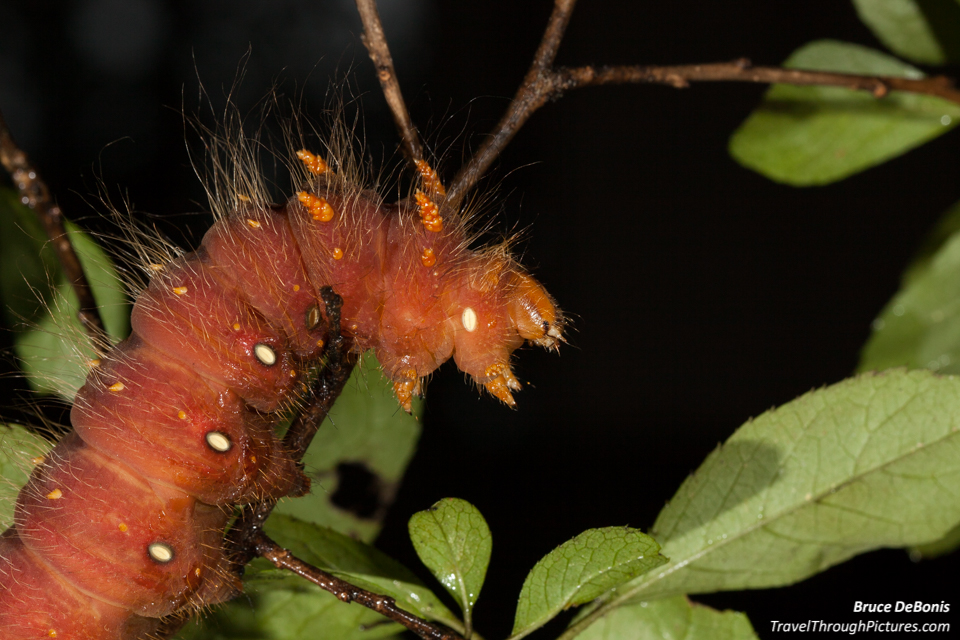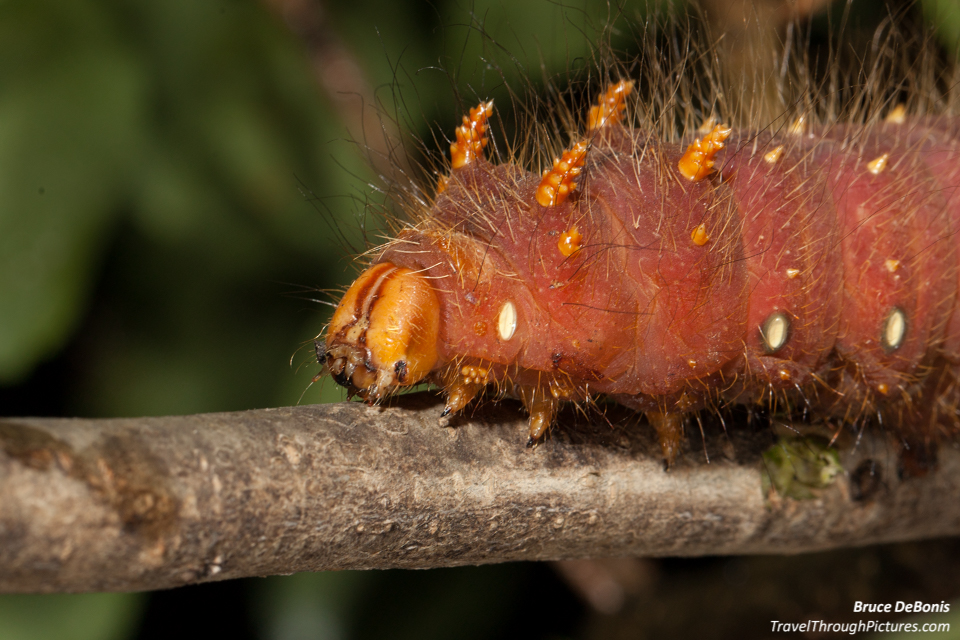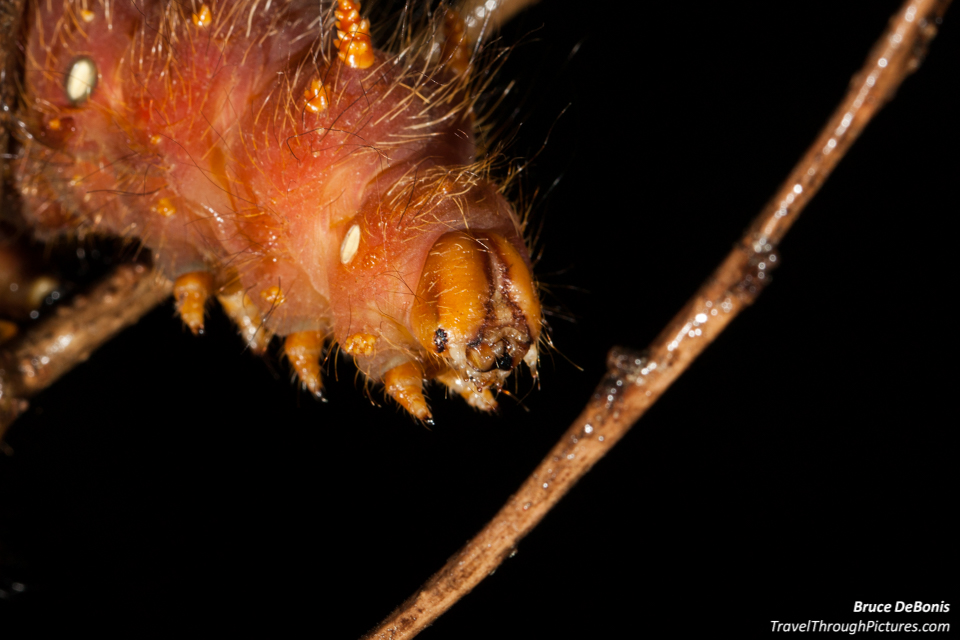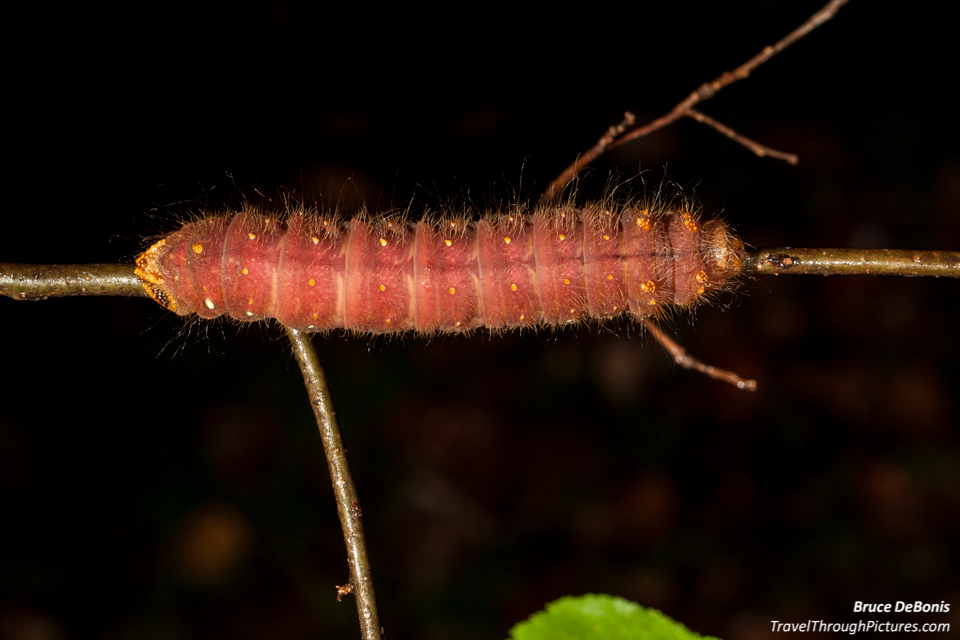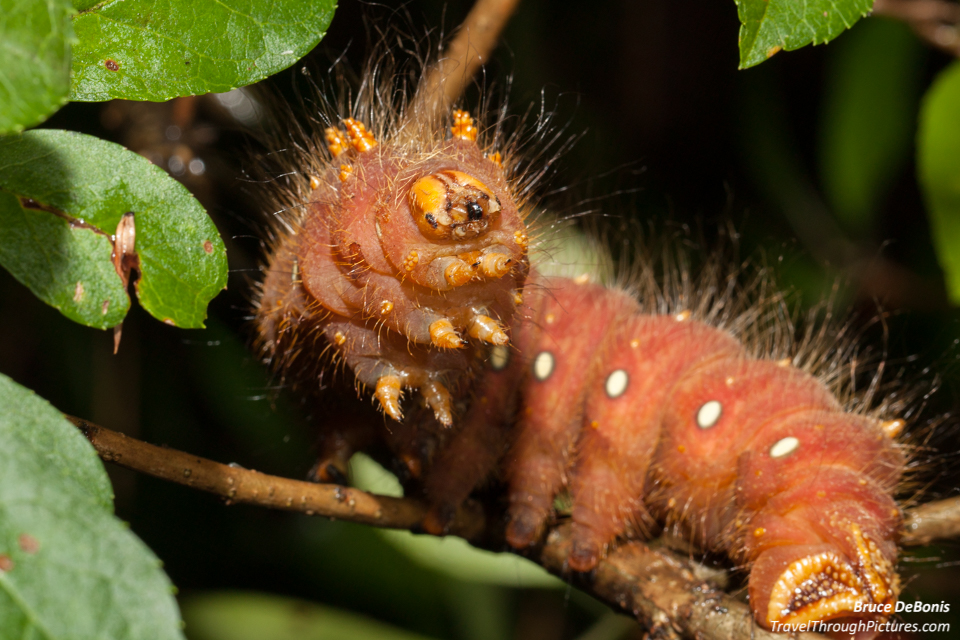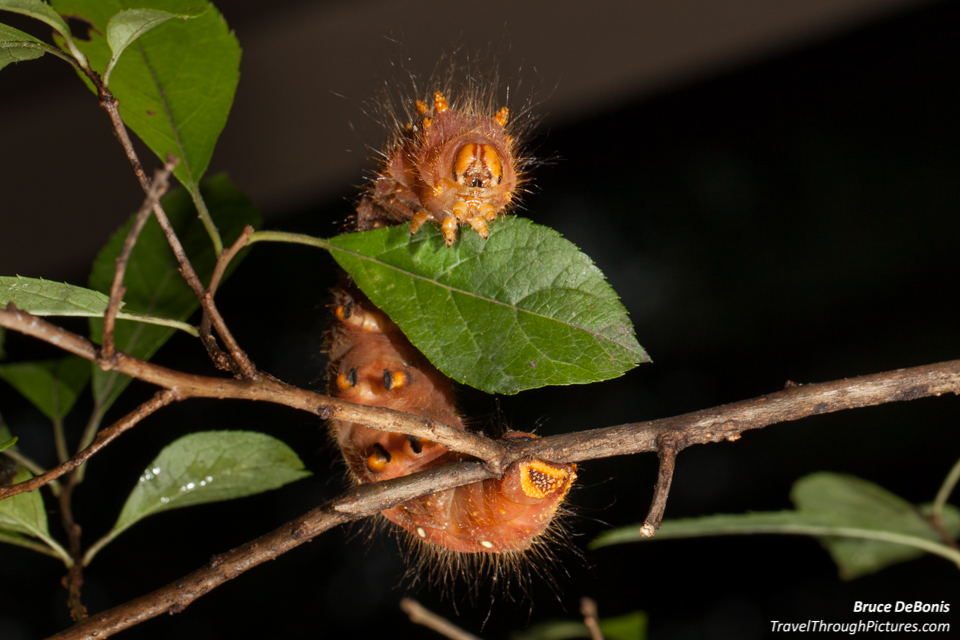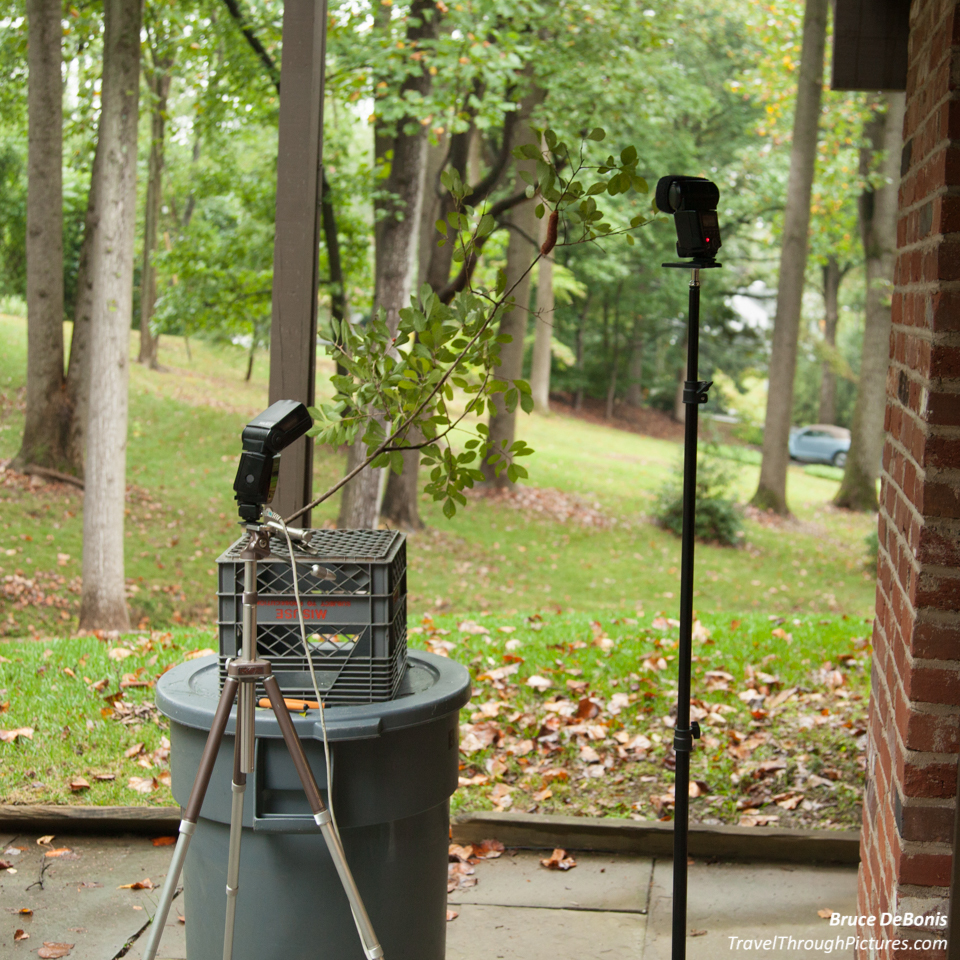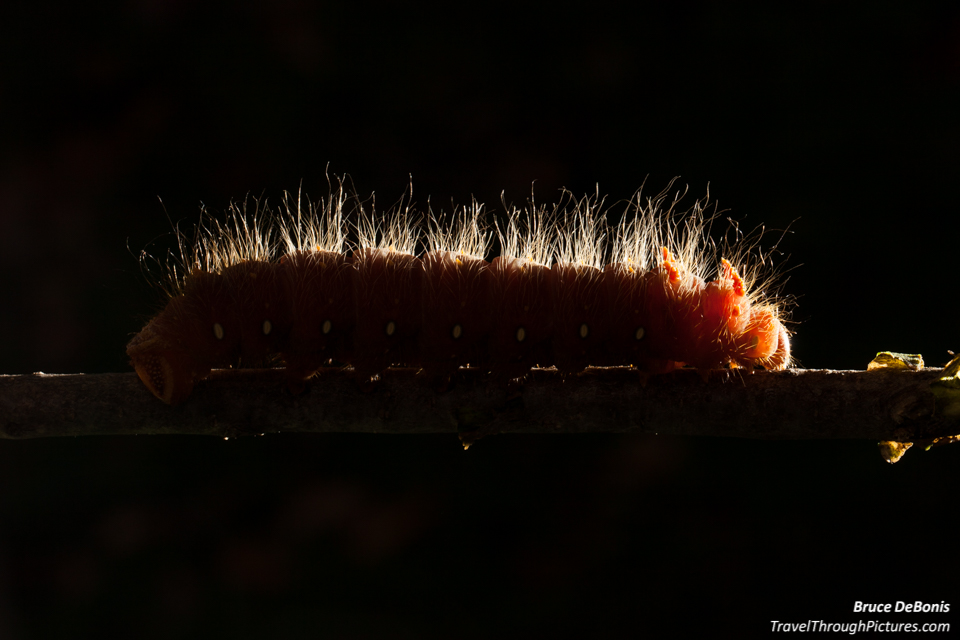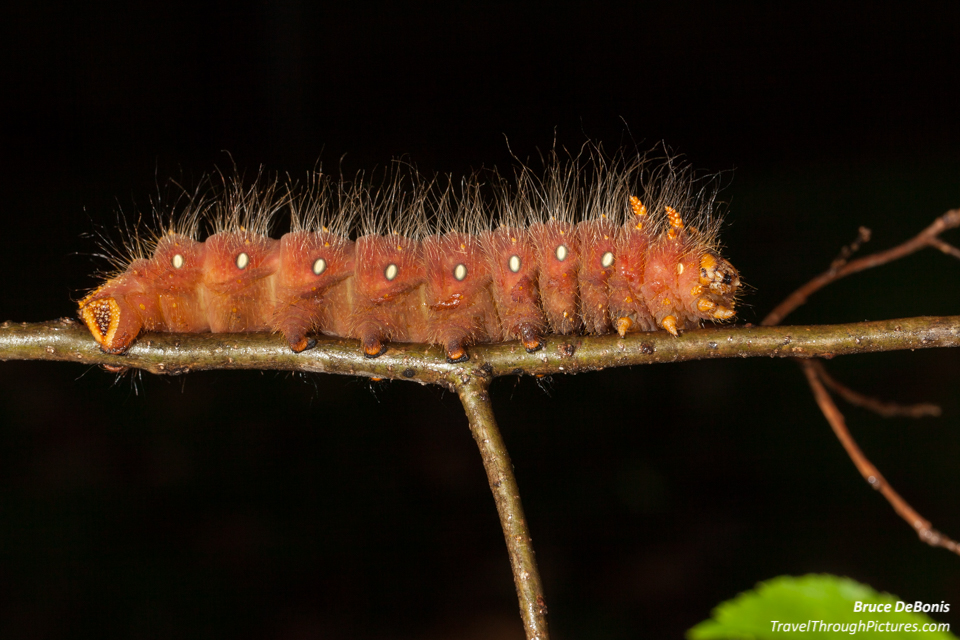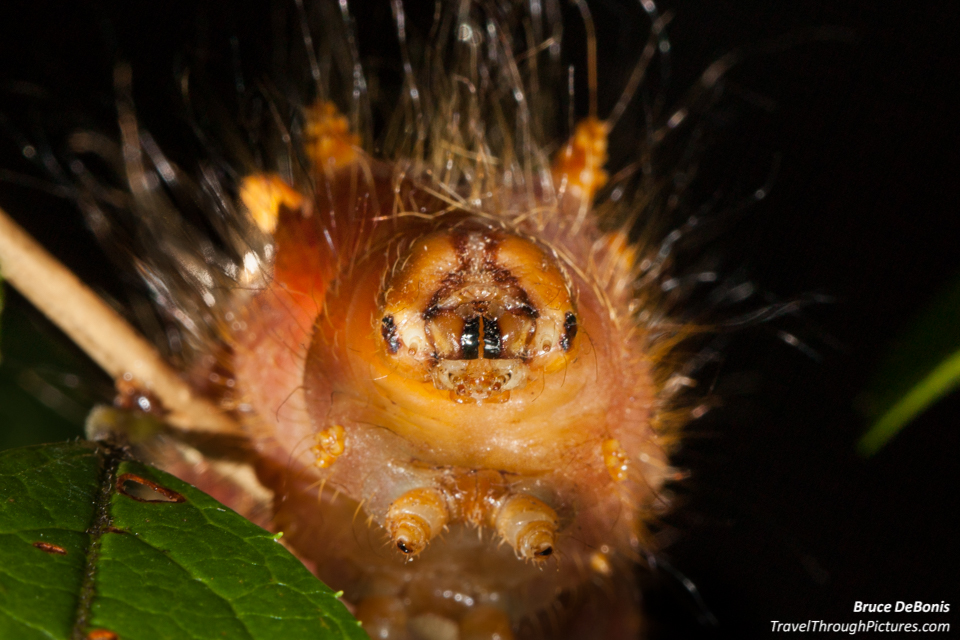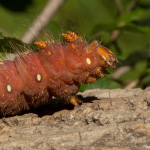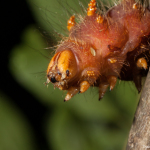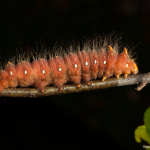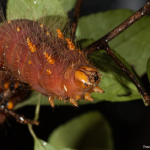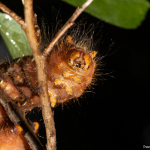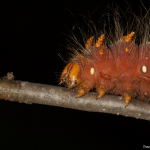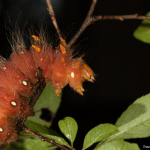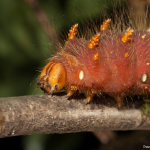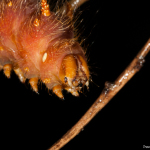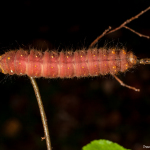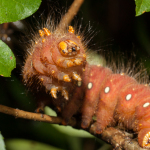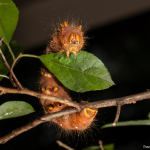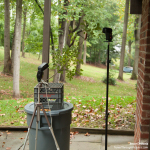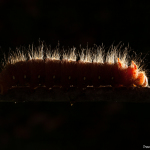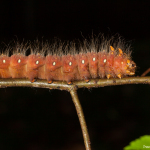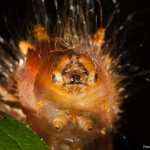This Thing Scared the Ch*t Outta Me!
I was up on my roof clearing leaves and branches when I saw this… this…. !THING! wiggling around under a fallen branch. YEOWWWW!!! I almost jumped straight off the roof to a certain death. He was huge at about 5-6 inches long, fat, and actually had some heft to him.
What did I do? Immediately I started to figure out how to photograph him of course.
What is it?
Besides being a creature put on this earth to send me to an early retirement from planet Earth, I believe it is the caterpillar of the Imperial Moth, one of the largest moths in North America. (I corrected this blog entry as I had incorrectly thought it was Cecropia.)
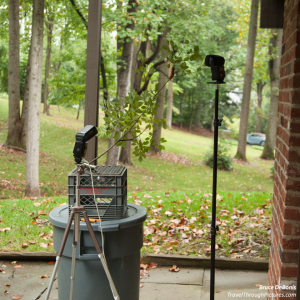 My Moth Studio
My Moth Studio
What, you don’t have a moth photography studio at the ready? Nor did I, so I cut a few branches from a shrubbery, and set one up. It was dusk and rainy and therefore no light. This means you have to use flashes. I took my knowledge from the work I did shooting hummingbirds and pretty much duplicated the set up. (Click here to see and read more about how I set up dual flashes.)
The Setup
I purchased, on a whim, a flash stand at a local camera store for around $20 with no purpose other than I thought I may need one someday. For once, I made a good impulse decision. For the other flash, I used my dad’s 1950’s era camera tripod that uses the same screw standard as today. Canon flashes come with a foot that has a screw hole under them to allow for just this type of installation on a tripod. Nice.
I was in a big hurry because SHE wanted me to clean the roof, gutters, rake out the bushes, do more stuff than time allowed, so I had to work fast. I set the flashes to their default, automatic E-TTL II modes hopping the Canon engineers got it right for caterpillar photography. I fired the main flash using a cheapo Pixel Ethernet flash trigger that uses Ethernet cables for cabling. For firing the second Canon flash, I used their optical master/slave optical triggering mechanism. (Read more about this flash setup here.)
To eliminate branch shadows and get good coverage, I had to move them around quite a bit and experiment. It is a good thing fat caterpillars are slow movers. For the camera, I wanted a closed down aperture to ensure deep depth of field to get as much of the critter in focus, front to back, that I could. I set my ISO at 200 for what I think is about the best quality. I can go to ISO of 100 but that would cost me some speed and I can’t see the quality difference between ISO 100 and 200. Here are all my settings:
- Flashes in full automatic E-TTL II modes
- ISO 200
- Shutter 1/100 (I should have gone slower to lighten up the background)
- Lens aperture f/13
After I snapped a bunch with the flashes, I threw the bugger in a bucket with some leaves, placed a board on it, and shot some more the next day in the sun. I then let him go on a nearby tree. To be honest, he didn’t look to good and wasn’t moving much. I suspect he wasn’t very healthy to have fallen out of the tree in the first place, but with luck, he will be a moth in the spring trying to finish the job of scaring me off the roof once more.
The Equipment:
- Canon 5D MkII
- Canon EF 100mm f/2.8L Macro IS
- Canon Speedlight 580 EXII
- Canon Speedlight 430 EX
- Pixel Ethernet Flash Triggers
- Vanguard GH-300T Pistol Grip Ball Head
- Manfrotto 190 CXPRO4 tripod
- LightRoom 5.6

